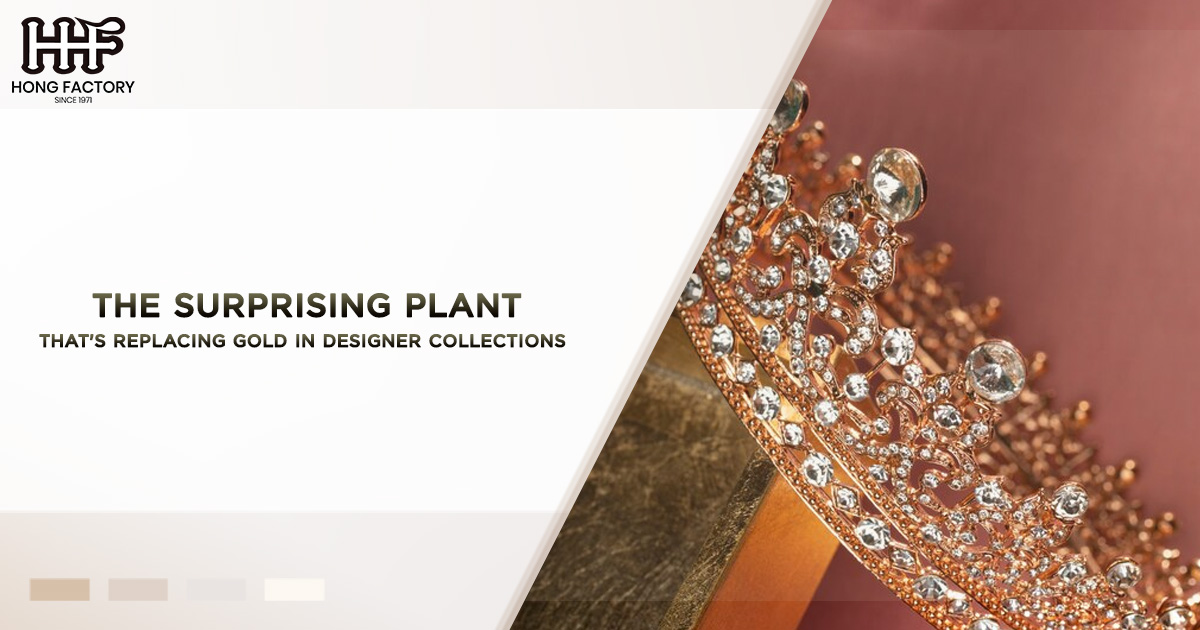As the world increasingly embraces sustainability, the fashion and jewelry industries are undergoing a significant transformation. One of the most surprising developments is the emergence of plant-based materials that are beginning to replace traditional precious metals like gold in high-end designer collections.
This shift not only reflects a growing demand for sustainable luxury but also showcases innovative materials that are reshaping the landscape of contemporary jewelry design. In this article, we will explore the rise of plant-based jewelry, its environmental benefits, the innovative materials being used, and the impact of eco-design on the future of luxury fashion.
The Shift Towards Sustainable Luxury
The luxury market has long been associated with opulence, often characterized by the use of precious metals and gemstones. However, as consumers become more aware of the environmental and ethical implications of their purchases, many are seeking alternatives that align with their values. The rise of eco-consciousness has led to a demand for sustainable luxury—a concept that emphasizes quality, craftsmanship, and sustainability.
Sustainable luxury is no longer just a trend; it’s becoming a new standard for the industry. Designers and brands are recognizing the importance of sourcing materials responsibly and are actively seeking innovative solutions that minimize their environmental impact. This shift is particularly evident in the jewelry sector, where traditional practices are being challenged, and exciting new alternatives are emerging.
The Emergence of Plant-Based Jewelry
At the forefront of this movement is plant-based jewelry, which offers a unique and eco-friendly alternative to gold and other precious metals. By utilizing materials derived from plants, designers are creating pieces that are not only beautiful and luxurious but also sustainable and ethical. The use of plant-based materials allows for a significant reduction in the carbon footprint associated with traditional mining and production practices.
Plant-based jewelry is not merely a novelty; it demonstrates the potential for creativity and innovation within the realm of sustainable design. As consumers gravitate toward products that tell a story and reflect their values, designers are taking note and incorporating these materials into their collections.
Innovative Materials Transforming Jewelry Design
1. Biodegradable Resins
One of the key innovations in plant-based jewelry is the use of biodegradable resins derived from natural plant sources. These resins can be infused with various organic materials, such as flowers, leaves, and even recycled wood, to create stunning and unique pieces. The process of designing with biodegradable resins allows for a wide array of colors and textures, often resulting in intricate designs that capture the essence of nature.
Biodegradable resins not only offer an eco-friendly alternative to traditional metals but also provide a level of customization that is appealing to consumers. Each piece can be a unique representation of the designer’s vision, offering something truly special for the wearer.
2. Mycelium Leather
Another innovative material gaining traction in the world of sustainable luxury is mycelium leather. Made from the root structure of fungi, mycelium is an incredibly versatile material that mimics the qualities of leather while being entirely plant-based and biodegradable. Designers are utilizing mycelium leather to create everything from jewelry to handbags, demonstrating its potential as a sustainable alternative.
The use of mycelium leather not only reduces the demand for animal products but also lessens the environmental impact associated with traditional leather production, which is known for its resource-intensive processes. By incorporating mycelium into their collections, designers can create luxurious pieces that align with eco-conscious values.
3. Bamboo and Other Natural Fibers
Bamboo, known for its rapid growth and sustainability, is another plant-based material making waves in the jewelry industry. Designers are using bamboo to create lightweight and stylish accessories, including earrings, bracelets, and necklaces. The natural beauty of bamboo, combined with its eco-friendly properties, makes it an appealing choice for sustainable jewelry.
Other natural fibers, such as hemp and organic cotton, are also being explored for use in jewelry design. These materials can be woven or braided to create unique pieces that showcase the beauty of nature while promoting sustainable practices.
4. Recycled Wood
Recycled wood is increasingly being used in jewelry design, offering a beautiful and sustainable alternative to traditional metals. By repurposing wood from old furniture, construction, or other sources, designers are crafting unique pieces that tell a story. The rich textures and patterns found in recycled wood add character and depth to jewelry, making each item one-of-a-kind.
Using recycled wood not only reduces waste but also adds an element of sustainability to the design process. Consumers can feel good about their purchases, knowing they are supporting a movement that prioritizes environmental responsibility.
Redefining Eco-Design in Jewelry
The shift towards plant-based jewelry represents a broader movement towards eco-design in the fashion industry. Eco-design encompasses a range of practices aimed at reducing environmental impact throughout the product lifecycle, from sourcing materials to production and distribution.
1. Ethical Sourcing and Transparency
One of the core principles of eco-design is ethical sourcing. Designers creating plant-based jewelry are often committed to transparency regarding their material origins. By openly sharing information about how materials are sourced and produced, brands can build trust with consumers who prioritize sustainability.
Many designers collaborate with local artisans and communities to source their plant-based materials, fostering economic empowerment and supporting fair trade practices. This commitment to ethical sourcing enhances the social responsibility aspect of sustainable luxury.
2. Minimal Waste Production Techniques
Eco-design also involves minimizing waste during the production process. Many designers are adopting techniques such as 3D printing and laser cutting to create intricate designs with minimal material waste. These methods allow for precise control over the materials used, reducing excess and promoting the efficient use of resources.
3. Longevity and Timelessness
Sustainable luxury emphasizes the importance of creating timeless pieces that transcend trends. By focusing on quality craftsmanship and enduring design, plant-based jewelry can stand the test of time. This commitment to longevity not only reduces the need for frequent replacement but also encourages consumers to invest in pieces that have lasting value.
The Future of Jewelry : Embracing Plant-Based Innovation
As consumers continue to seek out sustainable alternatives, the future of jewelry design is poised for significant transformation. Plant-based materials are at the forefront of this evolution, challenging traditional notions of luxury and quality. Designers who embrace innovative materials and sustainable practices are paving the way for a new era of jewelry that prioritizes both beauty and environmental responsibility.
The growing popularity of plant-based jewelry highlights a cultural shift towards eco-consciousness, with more individuals recognizing the importance of their purchasing decisions. As awareness of environmental issues rises, so too does the demand for sustainable luxury products.
Conclusion : A New Era of Sustainable Luxury
The emergence of plant-based jewelry represents a remarkable shift in the luxury jewelry market. By replacing traditional precious metals like gold with innovative materials derived from plants, designers are creating sustainable luxury pieces that resonate with eco-conscious consumers. This evolution not only reflects a commitment to ethical practices but also celebrates the beauty and diversity of the natural world.
With advancements in materials and production techniques, the future of jewelry design looks bright and promising. As more brands embrace plant-based alternatives, we can expect to see a growing array of stunning and unique pieces that honor both artistry and sustainability. The rise of plant-based jewelry is not merely a trend; it represents a significant movement towards a more responsible and thoughtful approach to luxury—one that values the earth and its resources while providing individuals with beautiful and meaningful adornments.




